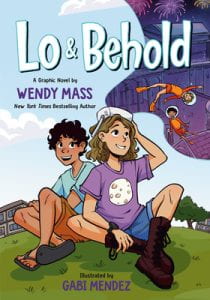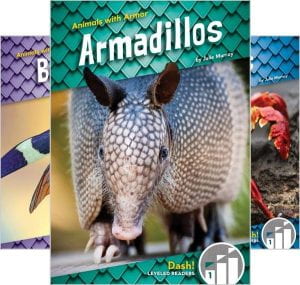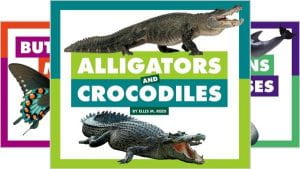 Mass, Wendy. Lo and Behold. Illustrated by Gabi Mendez. Random House, 2023. 978-0-593-17963-5. 205 p. $20.99. Grades 4-7.
Mass, Wendy. Lo and Behold. Illustrated by Gabi Mendez. Random House, 2023. 978-0-593-17963-5. 205 p. $20.99. Grades 4-7.
Addie Brecker’s life is full of wonder and imagination until her mother breaks her leg in a bicycling accident. Unable to cope with the pain of leg surgery, her mother becomes addicted to painkillers and even begins to sell them. While her mother is incarcerated for her crime, Addie and her father temporarily move to a college campus where her dad has gotten a job mentoring students working on virtual reality projects. Addie keeps to herself despite the efforts of Mateo, her neighbor across the hall. Even though he wants to be friends, Addie is not interested in sharing anything about herself. She assumes he has enough company with his mother and little brother. To fill the long hours while her father is at work, she straps on her virtual reality headset and tries out the students’ VR gaming prototypes. Mateo eventually leaves her alone, frustrated that his efforts to make a friend have been met with resistance. After she finds out what happened to Mateo’s family, she realizes she has to apologize. She stops by the hospital where Mateo volunteers in his free time. During her visit, Addie interacts with chemotherapy patients and discovers a way to make a difference in their lives while also starting a healing process of her own.
THOUGHTS: Wendy Mass has been fascinated with technology since she was a child, and her knowledge of virtual and augmented reality clearly comes across in the story. The events in the story are timely and touching, especially when paired with Gabi Mendez’s eye-catching illustrations. Lo & Behold is a touching story about coping with grief and using technology to improve the life of others.
Graphic Novel


